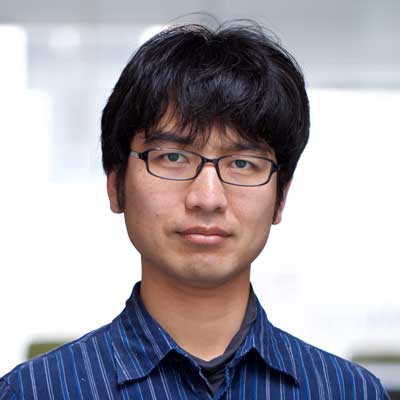LHCf/RHICf
Involving Research Members

Testing hadron interaction models for the air shower simulation using LHC at 1017 eV
The LHCf is an experiment to measure very forward particle production at Large Hadron Collider (LHC) operational since 2009. The LHCf is an international collaboration of 30 scinentists from 6 contries mainly from Japan and Italy. The group in the Nagoya University makes a major contribution in the collaboration.

Scientific Motivation
High energy cosmic rays interact with the atmospheric nuclei such as Nitrogen and Oxygen at the top of the atmosphere and the secondary particles continue the interaction to produce a bunch of particles called cascade shower (or air shower). The property of the primary particle is inferred by observing these air shower particles.
The particles emitted very foward in each interaction dominate the development of air shower, however, such particle emission is not well measured in the collider experiments. Dedicated study for such forward particle emission at the hadron colliders is indispensable to understanf the air shower development.
The 7 TeV proton – 7 TeV proton collisions at LHC corresponds to 1017 eV in the cosmic-ray interaction. Measurements of forward particle production at such high energy provide unique possibility to constrain the hadron interaction models and will solve the origin of the ultra-high-energy cosmic rays. The LHCf is a dedicated experiment to measure very forward particles at LHC.
Outline of the Experiment

The LHCf detectors are installed at 140 m away from the ATLAS interaction point (IP1) at LHC. Small shower calorimeters with transverse sizes ranging from 2 cm × 2 cm to 4 cm × 4 cm are inserted in the gap of two beam pipes, where neutral particles emitted in 0 degree collision angle can be detected. Because of the large particle production in the forward region, LHCf operates when the luminosity of LHC is low enough. LHCf successfully started data taking when LHC started operation in the end of 2009. LHCf finished the first stage operation after taking sufficient data of 3.5 TeV + 3.5 TeV proton collisions data in 2010.

Next Step
Now, LHCf is analyzing the data taken in 2009–2010. The first published resutls constrain the hadron interaction models used in the air shower simulation.
LHCf will take data of LHC proton–Lead collisions planned in the end of 2012. To understand the interaction between cosmic rays and atmosphere, not only proton–proton collisions but also nuclear collision data is indispensable. Unique data will be provided from the LHCf p–Pb operation.
In the end of 2014, LHC will increase the collisions energy to 7 TeV + 7 TeV. LHCf also takes data at this highest collision energy and is preparing the upgraded detectors.